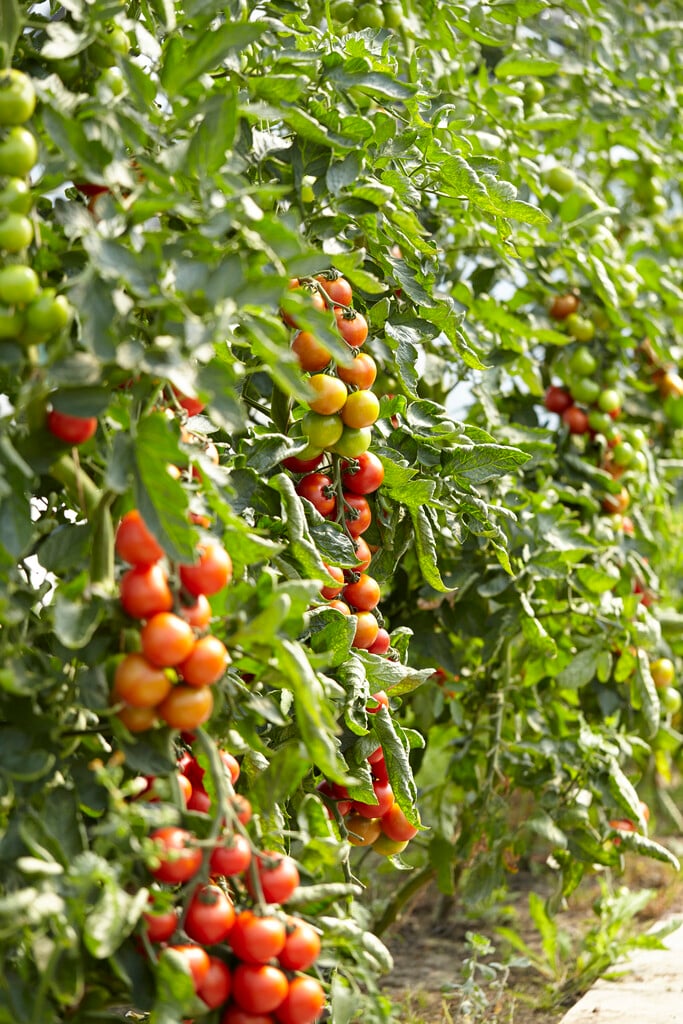Solanum lycopersicum
tomato
This is the original plant from which all know varieties of tomato have been bred. The original species is quite a large, branching and climbing plant growing up to 2m tall that is perennial subshrub in its native tropical habitat. The stems and leaves are covered with short hairs. The plant flowers with yellow, star-shaped flowers, 1-2cm across, that produce green berries, ripening to variable-sized tomatoes. There are many different cultivars that bear fruit differing in size, shape and colour
Size
Ultimate height
1.5–2.5 metresTime to ultimate height
1 yearUltimate spread
0.5–1 metresGrowing conditions
Moisture
Moist but well–drainedpH
Acid, NeutralColour & scent
| Stem | Flower | Foliage | Fruit | |
| Spring | Yellow | Green | ||
|---|---|---|---|---|
| Summer | Yellow | Green | Red Orange Yellow Brown | |
| Autumn | ||||
| Winter |
Position
- Full sun
Aspect
South–facing or West–facing
Exposure
Sheltered Hardiness
H1CBotanical details
- Family
- Solanaceae
- Native to GB / Ireland
- No
- Foliage
- Evergreen
- Habit
- Bushy, Columnar upright, Climbing
- Genus
Solanum can be annuals, perennials, evergreen or deciduous shrubs or twining climbers, with simple or pinnnately lobed leaves and star- or bowl-shaped, 5-lobed flowers with prominent stamens, followed by fleshy fruits
- Name status
Correct
How to grow
Cultivation
Start from seed or buy as small plants and grow on in a heated greenhouse or warm windowsill. Move to an unheated greenhouse or outside once all risk of frost has passed. Water regularly to keep the soil evenly moist, feed every 10-14 days with a balanced liquid fertiliser before switching to a high potassium liquid feed once the first fruits have set. Provide support for cordon tomatoes. See also tomato cultivation for more advice
Propagation
Propagate by seed. See sowing vegetable seeds or sowing seeds indoors for further advice
Suggested planting locations and garden types
- hanging basket
- Patio and container plants
- Edible fruit
- Conservatory and greenhouse
Pruning
Remove all side shoots as they appear. Pinch the growing tip when the plant has formed seven trusses under cover or four trusses outdoors
Pests
May be susceptible to glasshouse whitefly and tomato moth
Diseases
May be susceptible to honey fungus (rarely), blossom end rot, magnesium deficiency, tomato spotted wilt virus and grey moulds under glass
Love gardening
Sign up to receive regular gardening tips, inspiration, offers and more
View our Privacy Policy
Get involved
The Royal Horticultural Society is the UK’s leading gardening charity. We aim to enrich everyone’s life through plants, and make the UK a greener and more beautiful place.

